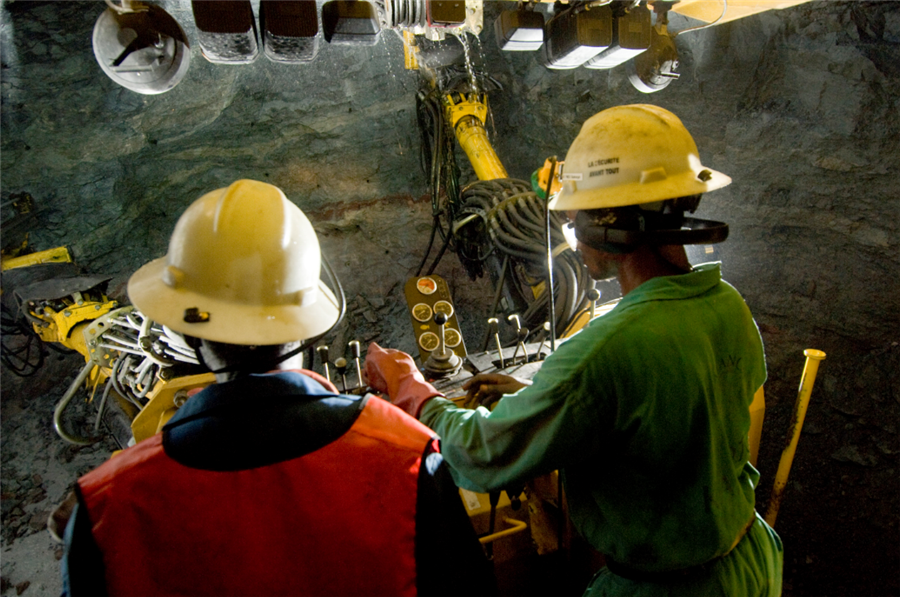Illegal miners defy eviction from Glencore’s Congo project

Illegal miners at a copper and cobalt mine run by Glencore in southeastern Democratic Republic of Congo defied a deadline to vacate the site on Tuesday, a union official said, raising fears of a potentially violent standoff.
A landslide last Thursday at the Kamoto Copper Company (KCC) concession, majority-owned by a Glencore subsidiary, killed 43 people, prompting the government to vow to remove the miners.
The army’s inspector general, General John Numbi, told Reuters on Monday that an operation to clear the estimated 2,000 miners would begin on Tuesday.
Tens of thousands of informal miners operate in and around large industrial mines in Congo
Reached by telephone, Joseph Yav, chief of staff to the provincial governor, said police were closing illegal trading houses around the mine and would call on the army if necessary.
But Delphin Monga, provincial secretary of the UCDT union, which represents KCC employees, said illegal miners inside the concession continued to work undisturbed and some had even thrown rocks at company vehicles.
“The miners have come back in even larger numbers than usual,” he said.
A spokesman for Switzerland’s Glencore, which is London-listed, declined to comment.
Some clashes broke out on Monday between miners and police. At least two officers’ weapons were seized at one point, Yav and Monga said. One miner and one police officer were injured, Monga said.
Last week, the army evicted thousands of miners from China Molybdenum’s nearby Tenke Fungurume mine.
Numbi said the soldiers did not fire a single shot. However, African Resources Watch, a watchdog based in the city of Lubumbashi, said in a statement that the army fired live rounds to disperse miners. It cited residents of the village of Kisanfu as saying three people died from gunshot wounds.
Army officials could not be reached for comment on Tuesday.
Root causes
Union officials and international activists, including Amnesty International, argue expulsion does nothing to address underlying factors, such as poverty and unemployment, that push people to brave dangerous conditions in mines.
“Without an alternative, the artisanals won’t leave and the army will move in. When soldiers are sent into the field, we all know what happens,” said Charles Kumbi, regional programme director with the IndustriALL union.
Last week’s accident, which briefly sent Glencore’s shares tumbling 7%, underscored foreign investors’ exposure to illegal mining activity on their properties.
Tens of thousands of informal miners operate in and around large industrial mines in Congo. Often equipped with little more than shovels, buckets and straw sacks, they burrow deep underground in search of ore. Accidents are common.
Congo produces more than half the world’s cobalt, a key component in electric car and other electronic batteries, but is one of the world’s least developed countries, afflicted by corruption, conflict and misgovernment.
Reports about the dire conditions in which some cobalt and copper is mined, including cases of child labour, have piled pressure on producers and end-users to prove supply chains are clean.
Companies fear that copper and cobalt will be dubbed “conflict” minerals like gold, tin, tantalum and tungsten, which have been used to finance wars in eastern Congo, said Gregory Mthembu-Salter, a former U.N. sanctions monitor in Congo.
“If a lot of people do get killed in this, it would be a big step towards that,” he said.
While last week’s army intervention did force miners from where they were operating at Tenke Fungurume, it was unclear if they had abandoned the site or only retreated to surrounding areas to wait out the operation. Local activists said the area offered to the miners to exploit on another side of the mine has only low-grade ore and is unlikely to satisfy them.
(By Fiston Mahamba, Aaron Ross and Joe Bavier; Editing by Andrew Cawthorne and William Maclean)
{{ commodity.name }}
{{ post.title }}
{{ post.date }}


Comments